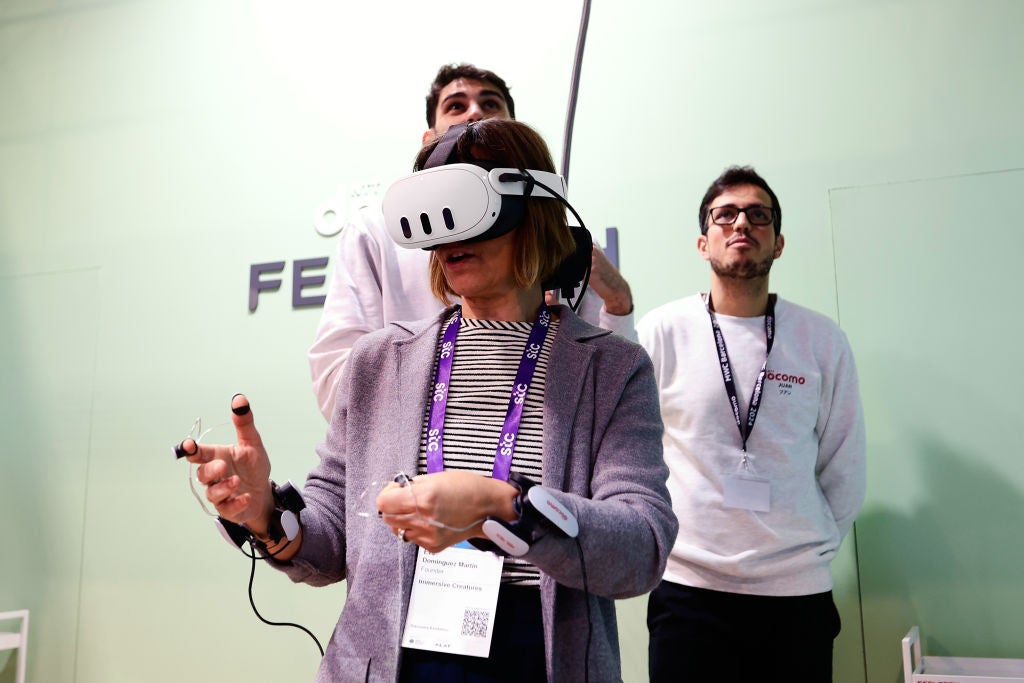
The real estate industry has quickly become a vocal advocate of utilising AR and VR technology. With the value of the real estate industry pushing more than $33tn, it was only a matter of time before entrepreneurs turned their attention towards this market.
3D photography
3D photography in real estate listings is becoming an expected facet of listing properties online. The advances in photography allows the real estate market to accurately depict the look, feel and dimensions of homes and commercial properties in a way that’s never been possible before. Previously, this perspective view would only be possible by physically setting foot inside the property. Now, prospective buyers can quickly view multiple listings from the comfort of their homes and glean far more accurate information than ever before. It’s estimated that 44% of all real estate searches are conducted via the internet as the first port of call. Having the ability to harness advanced technology such as 3D photography can not only help businesses expand their reach, but it also helps them deliver a high-quality service.
Virtual tours
Having the ability to take a virtual tour of a property from thousands of miles away is undoubtedly revolutionising the way the real estate market operates. It’s no longer necessary for the customer to arrange an appointment with an agent for a physical walkthrough of a space they may be interested in. With the advent of 360-degree virtual tours, a full walkthrough of properties is a simple and stress-free process. From home, customers can see every aspect of a property online via a panoramic virtual tour in their web browser. This can drastically reduce the amount of time both agent and prospective buyer spend contacting each other, arranging and attending viewings. The technology is no longer reserved only for high-end agencies, either. It’s affordable for smaller firms and is quickly becoming an expected element of online listings. For very little investment, even one-person operations can harness the power of AR and VR and cut down on time spent showing properties in person. The DOM (Days on Market) of a property can be seriously reduced with the implementation of virtual tours.
Augmented reality interior design
AR smart glasses, visors and helmets can show buyers exactly what properties would look like if they were furnished to the buyer’s own spec. This way of working can create partnerships between real estate firms and interior design firms to work together for the benefit of their customers. AR technology can turn flat images into interactive 3D experiences or transform a flat layout into a digital replica of a property. The technology allows them to work with the agent and designers to fully customise the space before ever setting foot inside. This is of particular benefit when buyers are in the market for a ‘fixer upper’.
Infrastructure visualisation
It’s always been a challenge to visualise properties that haven’t been constructed. It’s impossible to fully realise the dreams and vision of the architect without having something concrete to view. The advancement of VR technology has allowed designers and builders to dispense with clumsy cardboard models of neighbourhoods or industrial parks. With VR technology, the game has been completely turned on its head. The clarity and accuracy of photo-visual images and projections allows investors and buyers to see exactly what a project will look like when it’s finished. With the ability to beautifully showcase projects that haven’t been built, there is every chance that sales can be made before a single spade hits the dirt.
Virtual staging
An empty property can be difficult for our minds to transform into a cosy and welcoming home, especially for those of us lacking the vision to see ourselves in a particular space. With virtual staging, newly built or empty properties can be adapted to include all the features that buyers need to see to help them come to a decision. Staging brings properties to life and companies can show clients what a fully furnished and dressed home would look like. It’s an established fact that real estate owners know staged properties help clients imagine themselves in the space. If you can imagine yourself in a home, you’re far more likely to buy it than if you can’t. Being able to see yourself living somewhere creates a strong emotional connection between a buyer and a property. The adoption of virtual staging for the real estate industry could come with solid returns on the investment required to install the technology or hire a specialist.
How well do you really know your competitors?
Access the most comprehensive Company Profiles on the market, powered by GlobalData. Save hours of research. Gain competitive edge.

Thank you!
Your download email will arrive shortly
Not ready to buy yet? Download a free sample
We are confident about the unique quality of our Company Profiles. However, we want you to make the most beneficial decision for your business, so we offer a free sample that you can download by submitting the below form
By GlobalDataTime
While the focus is mainly on the technology itself, the other benefits that come from employing AR and VR in the real estate business can’t be underestimated. It typically takes a long time and a great deal of back and forth just to get to the stage where you can show a list of properties to a prospective buyer. With virtual staging or virtual tours, it’s highly unlikely you’ll have to conduct a physical walkthrough unless a buyer is serious about splashing the cash. All that time spent in traffic jams and hanging around empty homes, waiting for clients who are running late? Gone. With AR and VR in your business, you needn’t spend an extra millisecond of time trying to squeeze in appointments during office hours. Now your customers can log on and check out the listings 24/7 from any location around the world.
Cost cutting
In terms of marketing, pulling together brochures with multiple photos of a property, taken from a myriad of angles, will become a thing of the past. Not only will a virtual tour do more for sales that even the glossiest of brochures, but it will also save time and money on the ongoing cost of designing, compiling, printing and updating. AR and VR have the potential to replace all the traditional marketing techniques used in the real estate industry. In addition to marketing, there’s money saving on gas to get to and from properties. Cutting out the overheads associated with having a physical office presence, depending on the size and scale of your operation, is also a real possibility. Not only does adopting AR and VR in your business help you cut costs, but it also vastly reduces the costs incurred by your clients from visiting multiple sites. It’s a win-win.
Greater reach
Without having to set foot in another state or country, buyers from across the world can now tour existing properties and scheduled builds from anywhere. Not only does this make the process of searching and buying easier than it’s ever been for them, but it also transforms the real estate industry as a whole. Gone are the days of dealing with vendors within a specific geographic location. AR and VR tech allows businesses to dispense with the usual territory and market to the world. Not only does this help to expand the reach of real estate firms in a way that was impossible before, but it also carries with it the potential of greater profits. Technology has seriously sped up the entire selling process, from initial contact right through to concluding sales. This allows real estate agencies to offload properties faster and list more.
AR and VR technology has transformed the real estate industry over the past few years, and it shows no signs of slowing down. Instead of being an added bonus, it’s now becoming an expected feature for all listings. The challenge for the industry now is how to stay ahead of the curve – and ahead of the competition.
Read More: We Live in an Ocean of Air: How VR art is capturing the hearts and minds of audiences.





